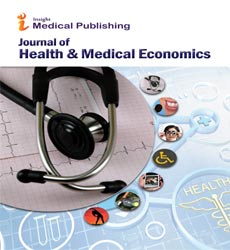Abstract
Clinical and Economic Burden of Cardiac Arrhythmias in Patients with Type 2 Diabetes
Importance: Cardiac arrhythmias are common in Type 2 Diabetics (T2D) and are associated with poor outcomes. Their incremental impact on Healthcare Resource Utilization (HCRU) and costs, and the effect of early detection using ambulatory Electrocardiogram (ECG) monitors, remain insufficiently characterized. Objective: To quantify predictive factors, incremental HCRU, and costs associated with arrhythmias in T2D, and to evaluate the impact of early detection through ambulatory ECG monitoring. Design: This population-based, retrospective cohort study used administrative claims from two US datasets: the Merative MarketScan database (2006-2023) for HCRU and total cost of care; and the Symphony Dataverse/Healthwise Consumer Data (2018-2023) for longitudinal clinical journey and risk factors analysis. Settings: Administrative claims of insured patients acquiring care in the United States healthcare system. Participants: Eligible patients were adults with 2 or more T2D claims less than 90 days apart, no prior claim for type 1 diabetes or COPD, and arrhythmia-naïve at T2D diagnosis. Arrhythmia cases required at least 2 arrhythmia claims. Matching was performed on age, sex, index year of arrhythmia, insurance type, comorbidity burden, and diabetes severity. Exposures: Arrhythmia diagnosis and use of ambulatory ECG monitoring. Main Outcome: HCRU and total cost of care. Results: From a pool of 32 million patients with T2D, 1.19 million developed an arrhythmia (57% male, median age 71 year) and 12.3 million did not (48% male, median age 62 years). Patients who developed arrhythmias had significantly higher comorbidity burden and diabetes severity; with age over 65, hypertension, elevated DCSI, and food insecurity as the strongest predictors of arrhythmia onset. In a matched cohort (213,226 T2D patients with arrhythmias vs 213,226 patients without), those with arrhythmias had higher emergency department visits, hospitalizations, re-admissions, and healthcare costs (all p <0.001). Patients who underwent ambulatory ECG monitoring had lower HCRU and costs compared to those never monitored. Conclusion: Among US adults with T2D, arrhythmias are associated with greater comorbidity, severity of disease, adverse social determinants of health, and substantially higher HCRU and costs. Targeted interventions for early detection, including ambulatory ECG monitoring, may mitigate this burden.
Author(s): Pierantonio Russo*, Ramaa Nathan, Daniel Pfeffer, Jason Poh, Ken Boyle, Brent Wright, Erik Hendrickson
Abstract | Full-Text | PDF
Share this

Google scholar citation report
Citations : 210
Journal of Health & Medical Economics received 210 citations as per google scholar report
Abstracted/Indexed in
- Google Scholar
- China National Knowledge Infrastructure (CNKI)
- WorldCat
- Geneva Foundation for Medical Education and Research
Open Access Journals
- Aquaculture & Veterinary Science
- Chemistry & Chemical Sciences
- Clinical Sciences
- Engineering
- General Science
- Genetics & Molecular Biology
- Health Care & Nursing
- Immunology & Microbiology
- Materials Science
- Mathematics & Physics
- Medical Sciences
- Neurology & Psychiatry
- Oncology & Cancer Science
- Pharmaceutical Sciences

